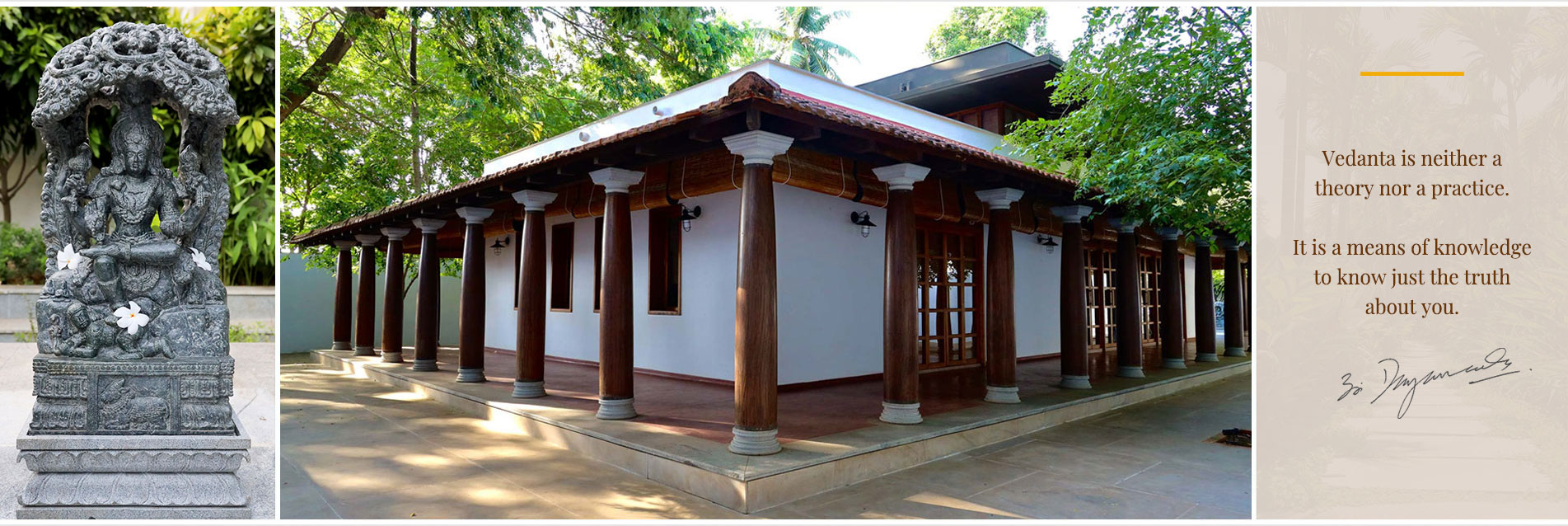
- Home
- »
- Resources » Books » What is Meditation…
Read Pujya Swamiji’s Books

prāṇāpānau samau kṛtvā nāsābhyantaracāriṇau (BG 5.27)
after settling into a rhythmic pattern of inhalation and exhalation.
We need to analyse what is exactly meant by the term ‘external world’ a world external to the senses. The sense organs are the reporters of the external world to the mind in the form of colours, sounds, smells and so on. ‘These forms are already external to the sense organs, therefore, how can I follow Lord Kṛṣṇa’s advice when the external world is already external?’ What is important to learn from this is that all things are not external to us, some are ‘internal’ as well. True, the stars are external, the moon is external, and the mountains are external, but when it comes to people we know, it is easy to see how the ‘external’ also becomes ‘internal.’ People with whom we are in close contact everyday get loaded in our heads like stowaways, even without our knowledge. Before we meditate, we must first unload the people from inside our heads…

prāṇāpānau samau kṛtvā nāsābhyantaracāriṇau (BG 5.27)
May one meditate keeping
the external objects external
after settling into a rhythmic pattern
of inhalation and exhalation.
We need to analyse what is exactly meant by the term ‘external world’ a world external to the senses. The sense organs are the reporters of the external world to the mind in the form of colours, sounds, smells and so on. ‘These forms are already external to the sense organs, therefore, how can I follow Lord Kṛṣṇa’s advice when the external world is already external?’ What is important to learn from this is that all things are not external to us, some are ‘internal’ as well. True, the stars are external, the moon is external, and the mountains are external, but when it comes to people we know, it is easy to see how the ‘external’ also becomes ‘internal.’ People with whom we are in close contact everyday get loaded in our heads like stowaways, even without our knowledge. Before we meditate, we must first unload the people from inside our heads…

Click on the book cover to read the book
Click on the book cover to read the book



